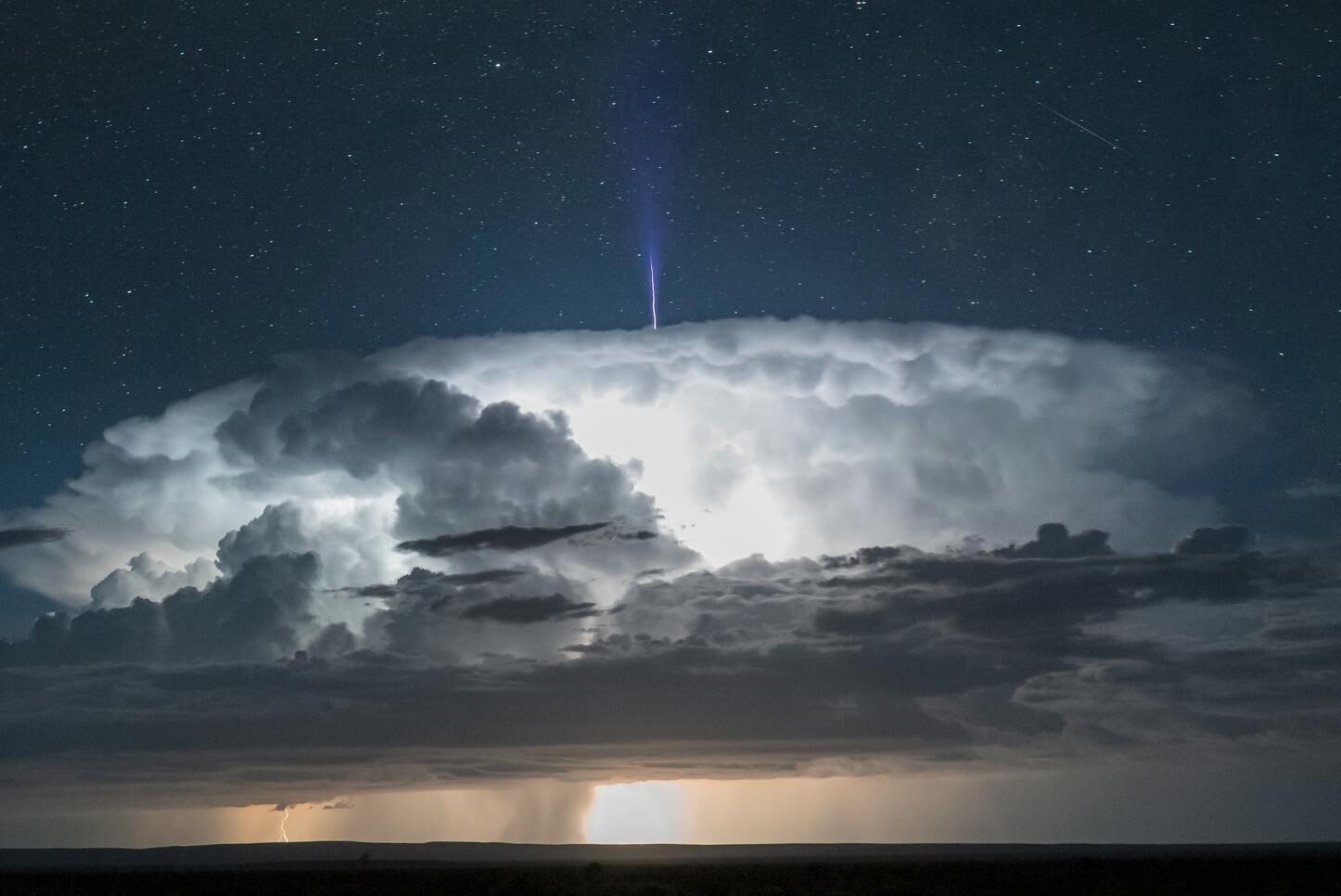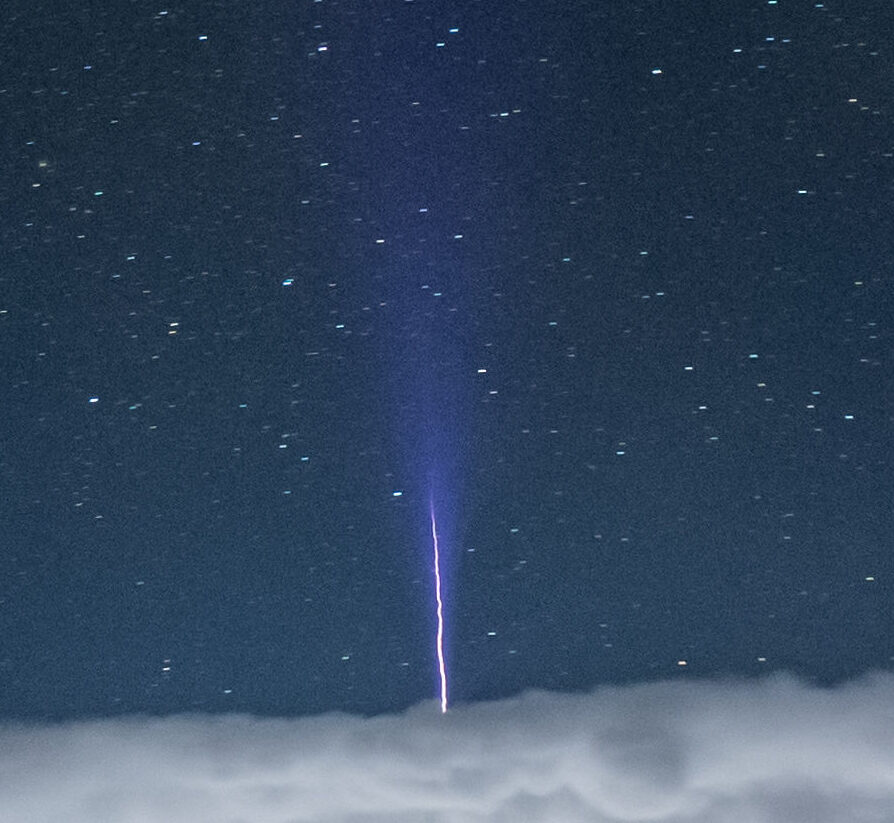
Griffiths is an amateur photographer, primarily interested in wildlife and the Milky Way. "On July 28th, I was starting a five night West Texas road trip to capture the Milky Way," he says. "But with thunderstorms in the distance I decided to try for red sprites instead."
He ended up photographing the sprite's elusive cousin, the blue jet. First recorded by cameras on the space shuttle in 1989, blue jets are part of a growing menagerie of cloudtop "transient luminous events" such as sprites, ELVES and green ghosts. They are all elusive, but blue jets may be the hardest of all to catch.
Comment: Taking into account the recency of the discoveries, along with the various other phenomena that have been occurring with an increasing frequency, some which were only just documented in the last decade or so - such as STEVE, the dunes and white picket fence auroras - and it wo nature of our planet.
"We're not sure why ground-based observers see them so rarely," says Oscar van der Velde of the Lightning Research Group at the Universitat Politècnica de Catalunya. "It might have something to do with their blue color. Earth's atmosphere naturally scatters blue light, which makes them harder to see. Blue jets might be more common than we think."
Comment: Or, they may becoming more common as, to give just two examples, Earth's magnetic field weakens and our atmosphere cools: Ozone hole above Antarctica is one of the largest ever, it's still growing, and may be linked to the COOLING stratosphere
A rookie mistake might have helped Griffiths. "This is only my second time trying for sprites. I might have aimed my camera too close to the cloud tops where bright lightning washed out the sprites; in fact, I couldn't find any sprites in my photos. But I think my camera angle was just right for catching the bright blue jet."

And, of course, they go up instead of down. Photos taken from the International Space Station (ISS) show that blue jets reach astonishing altitudes, as high as 170,000 feet. This is high enough to touch the ionosphere, possibly forming a new and poorly understood branch of Earth's global electrical circuit.
Comment: If correct, do these phenomena reveal a shift occurring to Earth's global circuit? For more on that, check out Pierre Lescaudron and Laura Knight-Jadczyk's book Earth Changes and the Human-Cosmic Connection.
"Also," says van der Velde, "there can be considerable production of NOx and ozone by these discharges, potentially affecting the chemistry of the upper atmosphere."
Clearly, it is important to study blue jets. Photographers, now you know where to look.



Comment: See also:
- Cosmic climate change: 'Space plasma hurricane' observed in ionosphere above North Pole!
- Energy from solar wind favors the north, surprising scientists
- The Seven Destructive Earth Passes of Comet Venus
- Planet-X, Comets and Earth Changes by J.M. McCanney
- Gulf Stream System at its weakest in over a millennium, last significant decline recorded during the little ice age
- Electric currents driven by solar wind create Saturn's auroras, heat planet's atmosphere - NASA
And check out SOTT radio's: